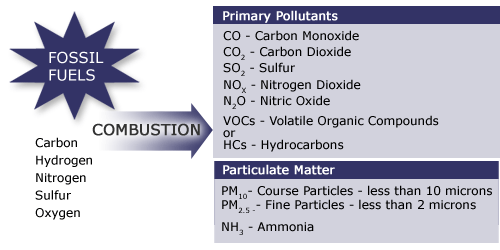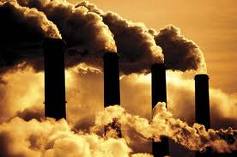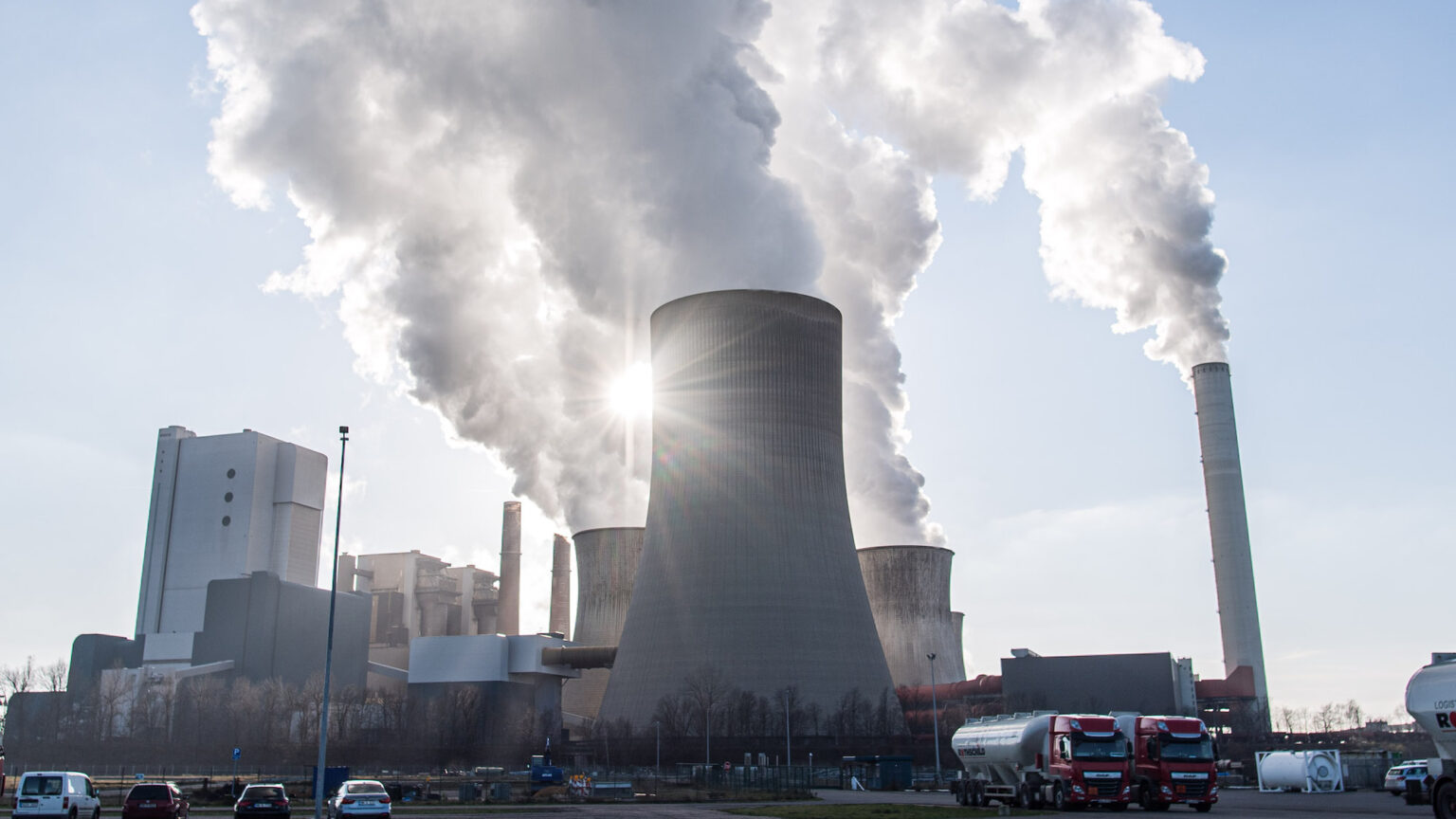Which Describes the Burning of Fossil Fuels
The burning of fossil fuels is the primary cause of current climate change altering the Earths ecosystems and causing human and environmental health problems. Fossil fuels formed from the remains of ancient plants and animals.

Products Of Combustion Egee 102 Energy Conservation And Environmental Protection
Natural resource that exists in a limited supply.

. When fossil fuels are burned they release nitrogen oxides into the atmosphere which contribute to the formation of smog and acid rain. This releases the energy that originally came from the sun. Burning fossil fuels releases carbon that was removed from the amosphere millions of years ago by animal and plant life.
As a consequence fossil fuels are very cheap and the search for alternative energy supplies has not been encouraged because of the lack of economic incentives. Burning any carbon based fuel converts carbon to carbon dioxide. The fossil fuels were formed from the remains of dead organisms over millions of years.
Fossil fuels impact the global carbon cycle. Due to human activity are from the burning of fossil fuels associated with transportation and industry. Burning hydrocarbon fuels produces carbon dioxide.
Smaller sources of SO 2 emissions include. Burning fossil fuels and burning wood produce similar pollutants because wood and fossil fuels are both consist of hydrogen and carbon. For more than a century burning fossil fuels has generated most of the energy required to propel our cars power our businesses and keep the lights on in our homesEven today oil coal and gas.
In the United States if it goes to 3 a gallon were horrified. Industrial processes such as extracting metal from ore. And locomotives ships and other vehicles and heavy equipment that burn fuel with a.
The disadvantages of fossil fuels are. These substances will rise terribly high into the atmosphere wherever they combine and react with water oxygen and other chemicals to form a lot of acidic pollutants called air pollution. To become a solid mineral.
The largest source of SO 2 in the atmosphere is the burning of fossil fuels by power plants and other industrial facilities. Human activities such as burning fossil fuels have been proposed as causes of the recent increase in the concentration of these greenhouse gases. Over the past 20 years nearly three-fourths of human-caused emissions came from the burning of fossil fuels.
Slippery greasy liquid that is usually flammable and does not mix with water. Burning the fuels breaks apart those bonds. The oyster industry in the Pacific Northwest worth over 110 million is threatened by ocean.
In Europe or most other parts of the world fossil fuels are heavily taxed. The burning of coal and petroleum produces a lot of pollutants causing air pollution. Gasoline costs about 8 a gallon in Europe.
But fossil fuel consumption has changed significantly over the past few centuries both in terms of what and how much we burn. The effects of the burning of fossil fuels especially carbon dioxide are having far-reaching effects on our climate and ecosystems. This leads to increased.
Some of the products from burning fuels. On Earth human activities are changing the natural greenhouse. Fossil fuel formed from the remains of ancient organisms.
The carbon cycle describes how carbon is. Over the last century the burning of fossil fuels like coal and oil has increased the concentration of atmospheric carbon dioxide CO 2This happens because the coal or oil burning process combines carbon with oxygen in the air to make CO 2To a lesser extent the clearing of land for agriculture industry and other. Globally fossil fuels account for a much smaller share of electricity production than the energy system as a whole.
Fossil fuels release oxides of carbon nitrogen sulphur etc that cause acid rain affecting soil fertility and potable water. These greenhouse gases occur naturally and play a major role in determining the Earths temperature by trapping and reflecting heat energy a process known as radiative forcing. Carbon dioxide emissions from burning coal account for 44 percent of the world total.
Natural sources such as volcanoes. Burning fossil fuels hasnt just changed the atmosphere it has fundamentally altered ocean chemistry. Today fossil fuel industries drill or mine for these energy sources burn them to produce electricity or refine them for use as fuel for heating or transportation.
Type of fossil fuel made up mostly of the gas methane. Major sources of nitrogen oxide emissions include. A material that humans take from the natural environment to survive to satisfy their needs or to trade with others.
Coal oil or natural gas. Animals ate some of those plants moving that. The burning of fossil fuels gives out harmful compounds like sulphur dioxide and nitrogen oxides.
My evidence is when fossil fuels are burned they release large amounts of carbon dioxide a greenhouse gas into the air. Major types of fossil fuels. Natural resource that exists in a limited supply.
Fossil fuels store energy in the bonds between the atoms that make up their molecules. Fossil fuels and climate change. Green plants had locked up that solar energy within their leaves using photosynthesis millions of years ago.
In two or more sentences describe the impact of fossil fuel combustion on the global carbon cycle. The burning of fossil fuels produce gases such as carbon dioxide that causes global warming. There are several main groups of fossil fuels including.
They are non-renewable finite resources. Carbon dioxide is produced when burning wood and fossil fuel. The Energy Department maintains emergency petroleum reserves ensures.
Flares burn at sunset in the Bakken oil and gas. Unless it is captured and stored this carbon dioxide is usually released to the atmosphere. Fossil fuels comprise 80 per cent of current global primary energy demand and the energy system is the source of approximately two thirds of global CO.
Sulphur dioxide and nitrogen oxides dissolve very easily. The burning of fossil fuels is causing a rise of acid levels in the ocean and it may be harming sea life according to a new study by researchers at Scripps Institution of Oceanography. Most of the nitrogen oxides released in the US.
Also called crude oil. Incomplete combustion creates poisonous carbon monoxide. The gasses trap heat in our atmosphere causing global warming.
The burning of fossil fuels for energy began around the onset of the Industrial Revolution. The UK per capita subsidy for road fuels was only 10 a year indicating taxes on petrol and diesel in 2020 were close to the level of the damage burning the fuels causes.

Consequences Of Burning Fossil Fuels Schoolworkhelper

Why Can T We Quit Fossil Fuels Fossil Fuels Global Warming Art Nature Images


No comments for "Which Describes the Burning of Fossil Fuels"
Post a Comment